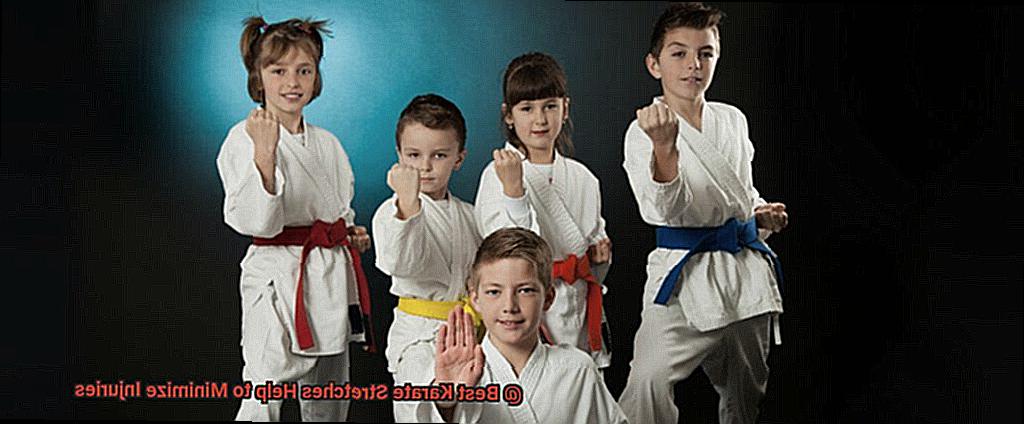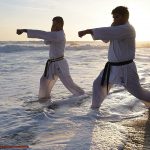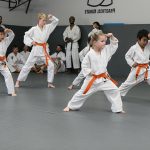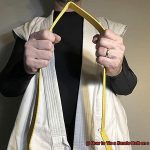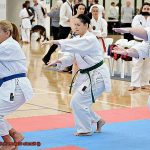Are you a karate enthusiast looking to take your skills to the next level? If so, buckle up because we’ve got just what you need. Stretching is a critical aspect of training that can make all the difference in your performance.
It improves flexibility and range of motion, but it also plays a vital role in minimizing injuries. With regular stretching, studies have shown that the risk of injury in martial arts can be significantly reduced.
Whether you’re new to karate or an experienced practitioner, incorporating the best karate stretches into your training regime is essential. The right stretches not only aid in injury prevention but can also enhance your overall performance in the ring.
From dynamic stretching to static stretching, there are different types of stretches that cater to different parts of the body. In this blog post, we’ll explore the most effective karate stretches that will give you an edge over your competition.
So, get ready to unleash your full potential and take your karate journey to new heights with these tried-and-true karate stretches.
What Are Karate Stretches?
Karate is a highly dynamic martial art that demands strength, flexibility, and endurance.
That’s why proper stretching techniques are crucial to any karate training program. Karate stretches are specific exercises designed to increase flexibility, range of motion, and muscle strength while also reducing tension and preparing the body for the physical demands of karate training.
There are several types of karate stretches that offer unique benefits. Static stretching involves holding a stretch position for a certain amount of time, while dynamic stretching involves moving through a range of motion repeatedly.
Ballistic stretching involves quick bouncing or jerking movements to increase flexibility rapidly, while PNF stretching involves contracting and relaxing muscles in a specific pattern. The butterfly stretch is one of the most commonly used karate stretches, targeting the groin and inner thigh muscles.
The seated forward bend focuses on the hamstrings and lower back, while the standing quadriceps stretch targets the front of the thigh. Other stretches may target specific areas of the body such as the hips or shoulders, depending on individual needs.
Incorporating karate stretches into your practice routine can help minimize the risk of injury and enhance overall performance. It’s important to remember that stretching should always be done after a proper warm-up to prevent further injury.
Moreover, it’s best to listen to your body and never force yourself into a stretch that causes pain or discomfort. Karate stretches are an essential part of any karate training program.
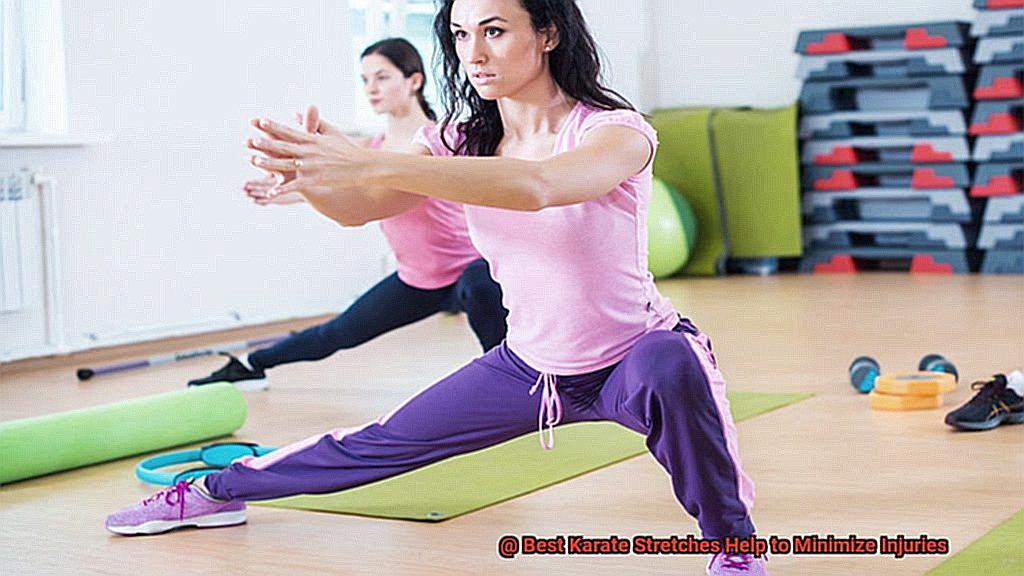
By incorporating a variety of different types of stretches into your routine, you can achieve maximum benefits and keep your body safe while performing at your best.
Benefits of Karate Stretches
Karate is a martial art that demands a lot from the body.
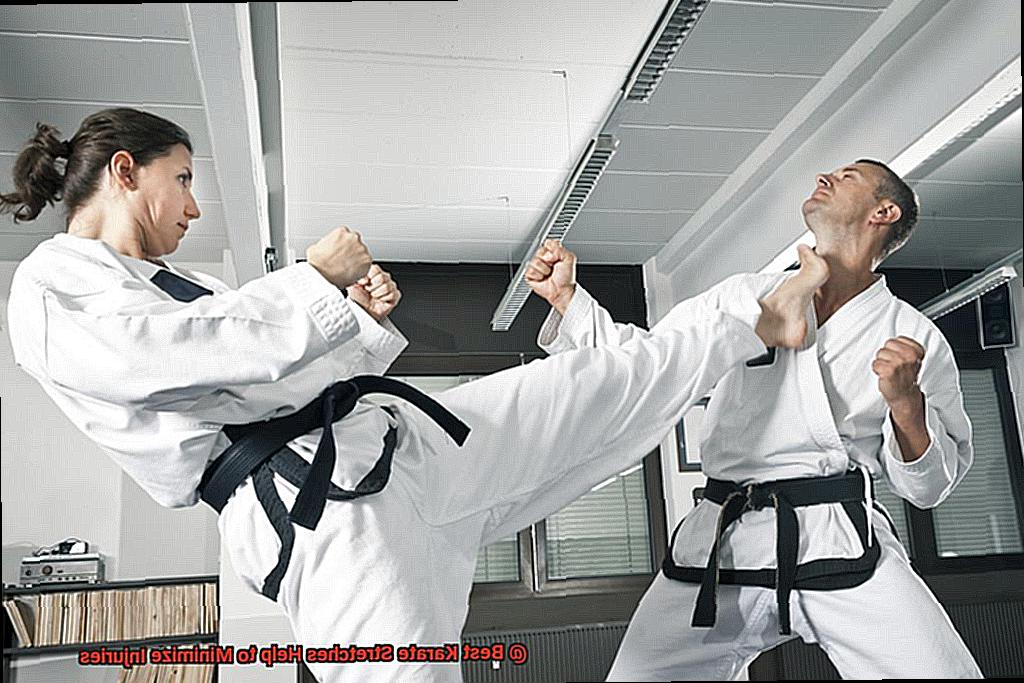
To perform at the highest level, karate practitioners must develop strength, agility, and flexibility. One of the most important techniques for achieving these attributes is through karate stretches.
Not only do they increase flexibility, range of motion, and muscle strength, but they also play a critical role in preventing injuries during training. One of the primary benefits of karate stretches is that they help prevent muscle strains and tears.
These types of injuries are common in martial arts, especially if a practitioner tries to perform a technique beyond their range of motion. However, by regularly stretching, practitioners can gradually increase their flexibility and reduce the likelihood of straining or tearing a muscle.
In addition to preventing muscle injuries, karate stretches can also help prevent joint injuries. Proper warm-up before engaging in rigorous activities such as karate training is essential for reducing stress on the joints.
By stretching the muscles around the joints, practitioners can improve their flexibility and decrease the chance of joint strains or even dislocations. But that’s not all.
Karate stretches offer several other benefits as well. For instance, they improve balance and coordination, enhance breathing techniques, and reduce stress and tension in the body.
Furthermore, stretching is crucial for recovery after training as it helps to flush out lactic acid and other waste products from the muscles. In summary, incorporating karate stretches into your training routine is vital for minimizing injury risks and improving overall performance.
Remember that proper karate stretches are like a warm embrace from a caring mother preparing your body for the physical demands of karate training.
How to Prepare for Stretching
Stretching is an essential part of any physical activity, including karate. But before you jump into stretching exercises, it’s important to prepare your body for the task at hand. In this section, we’ll explore five key steps to take before stretching to ensure a safe and effective workout.
Warm-Up Gradually

Just like how a car needs time to warm up before hitting the road, your body needs to gradually increase its temperature and blood flow to your muscles before stretching. Start with light cardio exercises such as jogging or jumping jacks to get your heart rate up and help prepare your body for stretching.
Dress for Comfort
Imagine trying to stretch in tight jeans or restrictive clothing – not fun, right? To avoid hindering your movements and prevent injuries, wear comfortable clothing that allows you to move freely. Opt for breathable fabric that won’t trap sweat against your skin.
Begin Gently
It’s tempting to dive right into deep stretches, but starting gently is crucial to avoid injuries. Begin with gentle stretches and gradually increase the intensity over time. Remember, stretching should never be painful or uncomfortable. If you experience any pain or discomfort, stop immediately and seek advice from a professional.
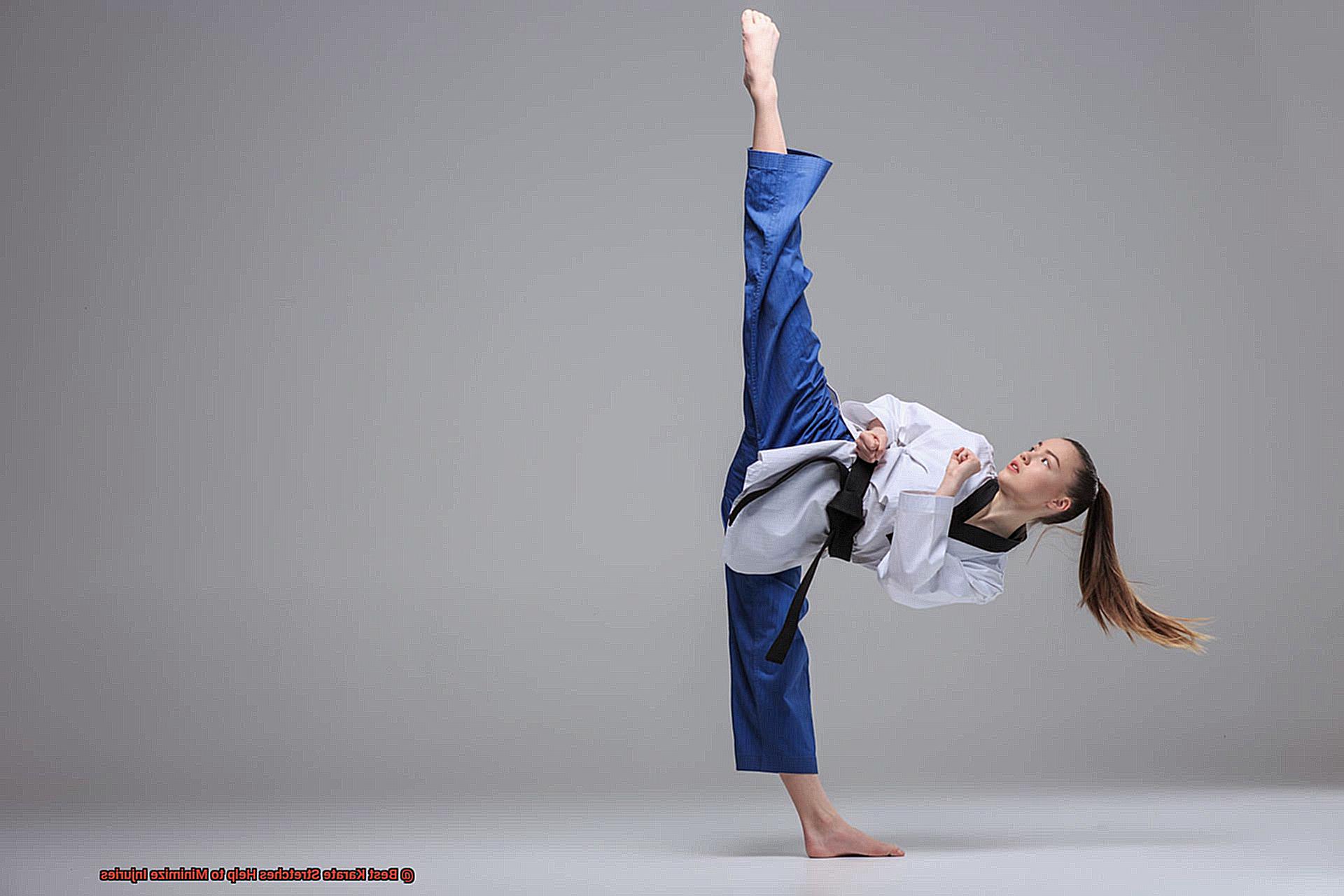
Listen to Your Body
Your body knows best when it comes to how far you can stretch. Don’t force any stretches that cause pain or discomfort – instead, listen to your body’s signals and adjust accordingly. This will help prevent injuries and make your stretching routine more effective in the long run.
Stay Hydrated
Stretching can be a workout in itself, so it’s important to stay hydrated throughout your routine. Drink water before, during, and after your stretching exercises to prevent dehydration and muscle cramps.
The Butterfly Stretch for the Legs
Whether you’re a seasoned pro or just starting out, the Butterfly Stretch is an easy-to-perform stretch that can be done anywhere. By improving the range of motion in your hips, this stretch is particularly important for karate practitioners who need to execute kicks and other martial arts moves with precision and ease.
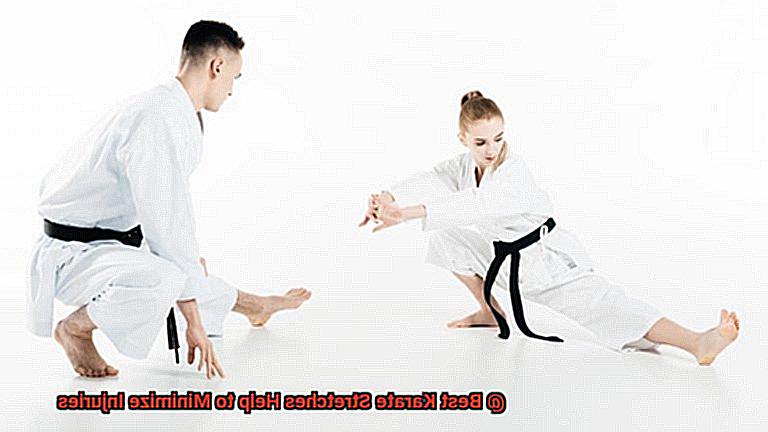
To get started, sit on the floor with your knees bent and feet together. Use your hands to hold onto your ankles, then gently press your knees towards the floor.
Keep your back straight and avoid rounding your spine or leaning forward. Hold the stretch for 30 seconds to one minute before releasing.
But here’s the best part: you can easily modify the Butterfly Stretch to suit your level of flexibility. If you’re less flexible, try placing a block or blanket under your hips for extra support.
As you become more flexible over time, gradually decrease the height of the prop until you no longer need it. Incorporating the Butterfly Stretch into your regular karate training routine can help improve your overall performance and reduce the risk of injury.
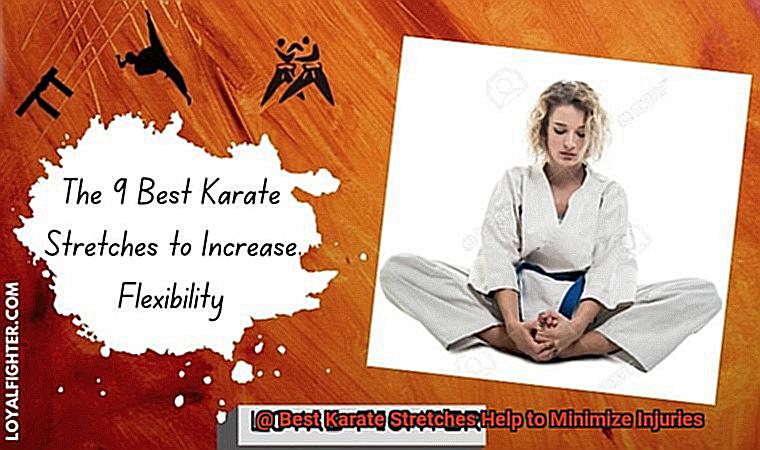
By keeping your hips and groin muscles flexible, you’ll be able to execute kicks and other martial arts moves with greater ease and precision. Remember to always warm up before stretching and listen to your body’s signals.
Staying hydrated throughout your stretching routine is also crucial for avoiding injuries and making your stretching exercises more effective. With consistent practice, you’ll soon see improvements in your flexibility and karate performance.
The Hamstring Stretch for the Legs
If you’re looking to improve your flexibility and reduce the risk of injury as a karate practitioner, then the hamstring stretch is an exercise you can’t afford to miss.
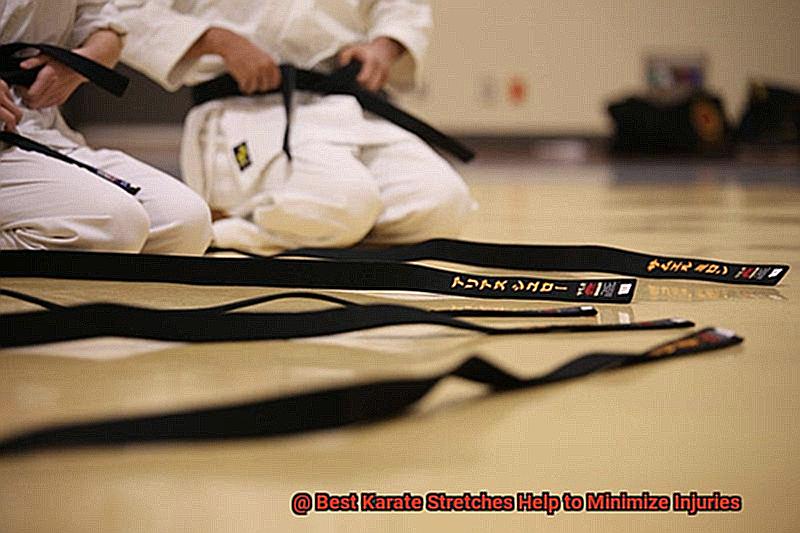
This stretch targets the hamstrings – those crucial muscles at the back of your thigh that play an essential role in kicking and jumping movements. To perform the hamstring stretch, start by sitting on the floor with your legs extended in front of you.
Pick a leg and bend the knee, placing the sole of your foot on the inside of your opposite thigh. Slowly lean forward from your hips while keeping your back straight and reach towards your toes with both hands.
Hold this position for 20-30 seconds before switching sides. It’s important to remember not to overdo it when stretching your hamstrings as this can lead to injuries.
To avoid this, make sure you take things slow and gradually increase intensity over time. Additionally, ensure that you stretch only after a proper warm-up to prevent any unwanted injuries.
However, before starting any new exercise program, always consult a qualified instructor or healthcare professional.
6bdL5qpNFt8″ >
The Figure-Four Stretch for the Hips
In karate, hip flexibility is crucial for generating power and executing various movements. However, repetitive kicking and striking can leave your hip muscles tight and tense.
That’s where the Figure-Four stretch comes in to save the day. This essential stretch targets the hip muscles, providing a range of benefits such as increasing flexibility, reducing muscle tension, and preventing injuries.
By incorporating the Figure-Four stretch into your warm-up routine, you can prepare your hip muscles for the demands of karate movements. To perform this stretch, lie on your back with your knees bent and feet flat on the ground.
Cross your left ankle over your right knee to form a “figure-four” shape with your legs. Hold onto your right thigh and gradually pull it towards your chest until you feel a stretch in your left hip.
Take deep breaths throughout the stretch to help relax your muscles and increase blood flow to the area. Hold this position for 15-30 seconds before switching sides.
It’s important to never force your body into a stretch beyond its limit. Ease into each stretch gradually and hold it at a comfortable level of tension.
Remember that deep breathing is essential for maximizing the benefits of each stretch while preventing injury. Incorporating the Figure-Four stretch into your routine can help improve overall flexibility and reduce the risk of hip injuries such as strains or sprains.
Also Read: Health Benefits of Karate – Karate Maine Blog
Conclusion
Karate is a challenging martial art that requires strength, agility, and flexibility.
To help minimize the risk of injury and maximize your performance, it’s important to incorporate karate stretches into your practice routine. Not only do these stretches aid in injury prevention, but they also enhance balance and coordination, improve breathing techniques, and reduce stress and tension in the body.
There are several types of karate stretches to choose from, each with its own unique benefits. Static stretching involves holding a stretch position for a certain amount of time, while dynamic stretching involves moving through a range of motion repeatedly.
Ballistic stretching involves quick bouncing or jerking movements to increase flexibility rapidly, while PNF stretching involves contracting and relaxing muscles in a specific pattern. For example, the butterfly stretch targets the groin and inner thigh muscles, while the seated forward bend focuses on the hamstrings and lower back.
The standing quadriceps stretch targets the front of the thigh. By incorporating these stretches into your training routine, you’ll be able to improve your overall flexibility and performance.
However, before starting any new exercise program, it’s crucial to consult with a qualified instructor or healthcare professional. It’s also important to warm up gradually with light cardio exercises such as jogging or jumping jacks before starting any stretching exercises.
Staying hydrated throughout your stretching routine is also essential for avoiding injuries and making your stretching exercises more effective.

